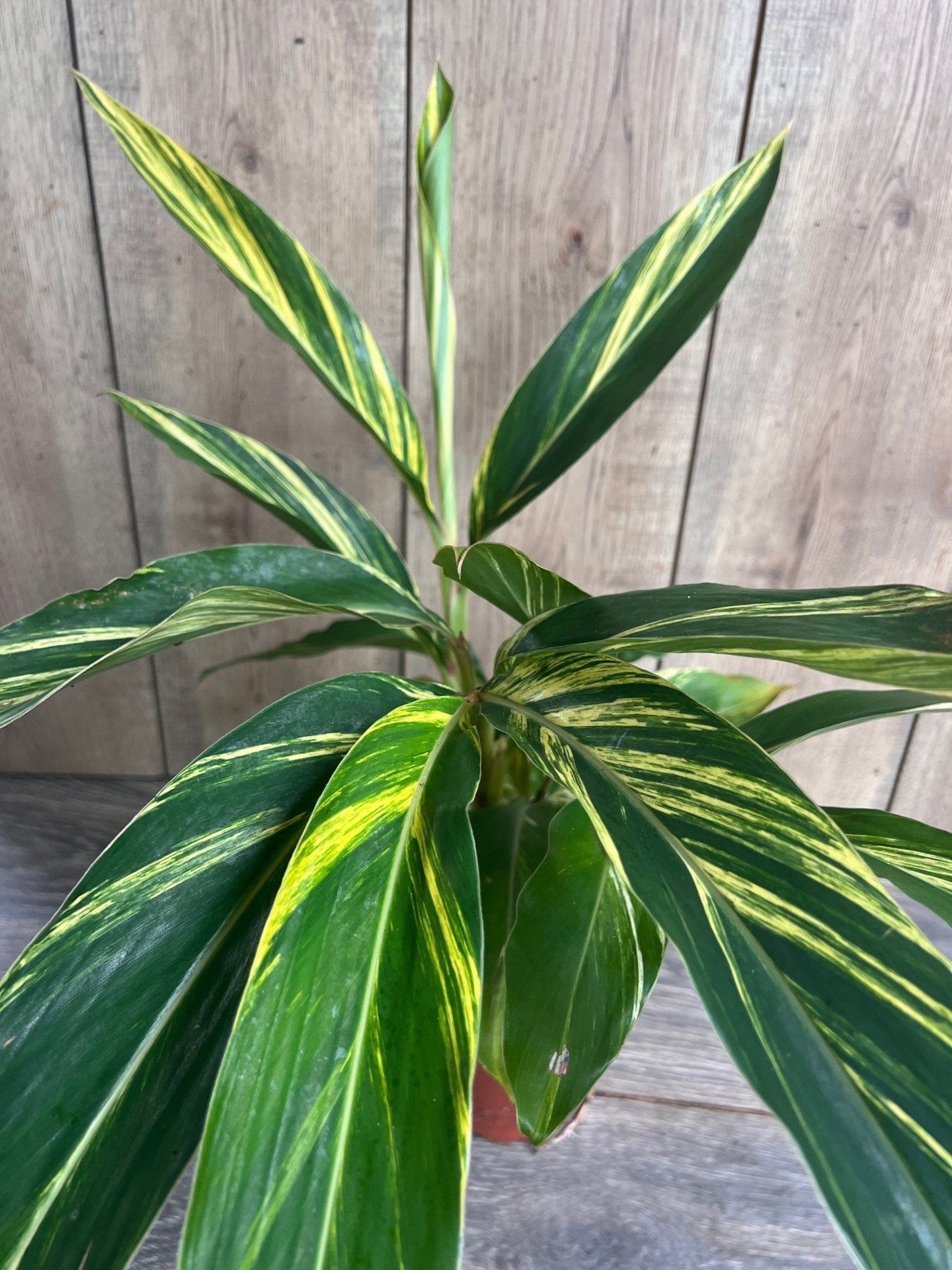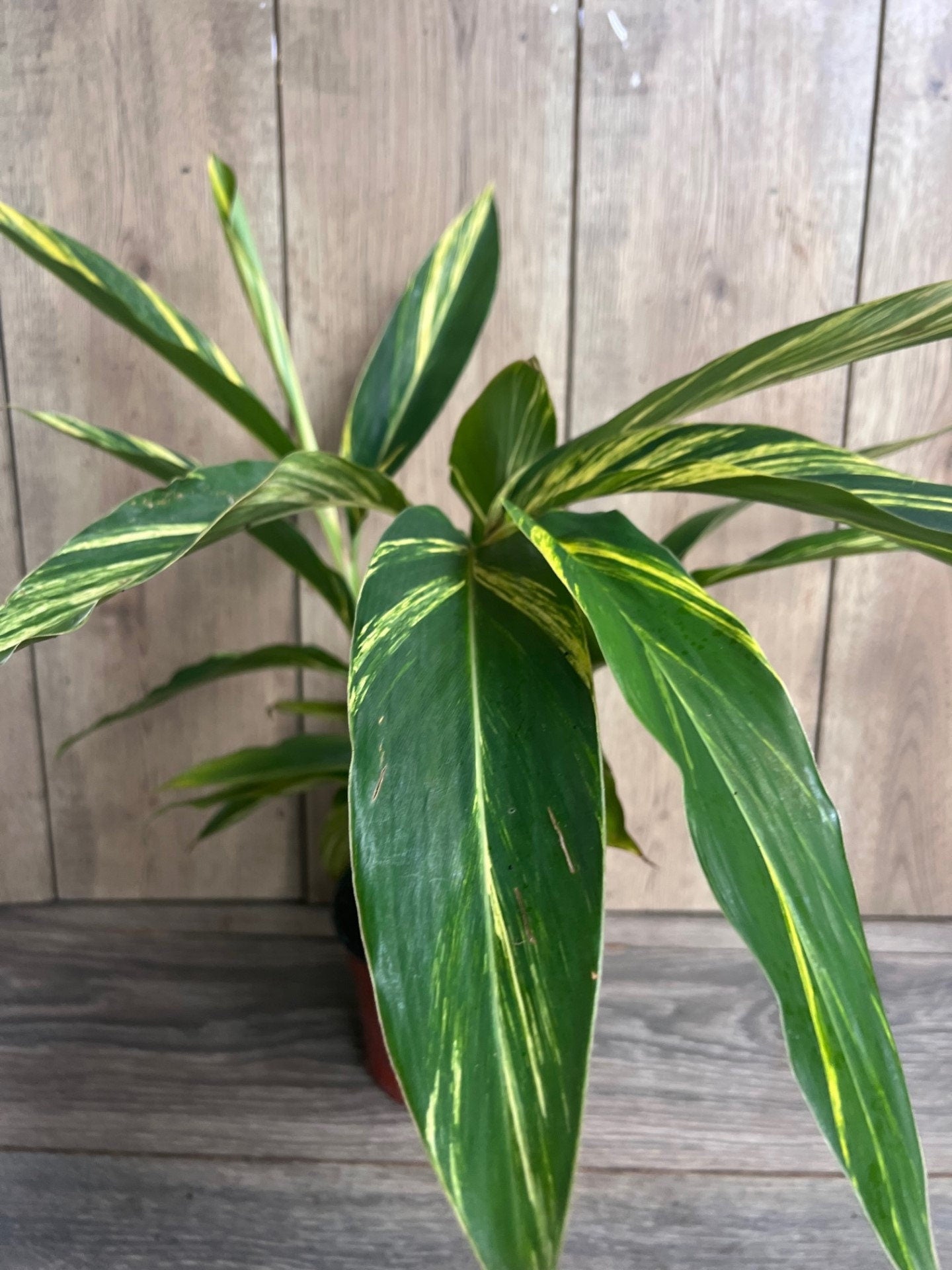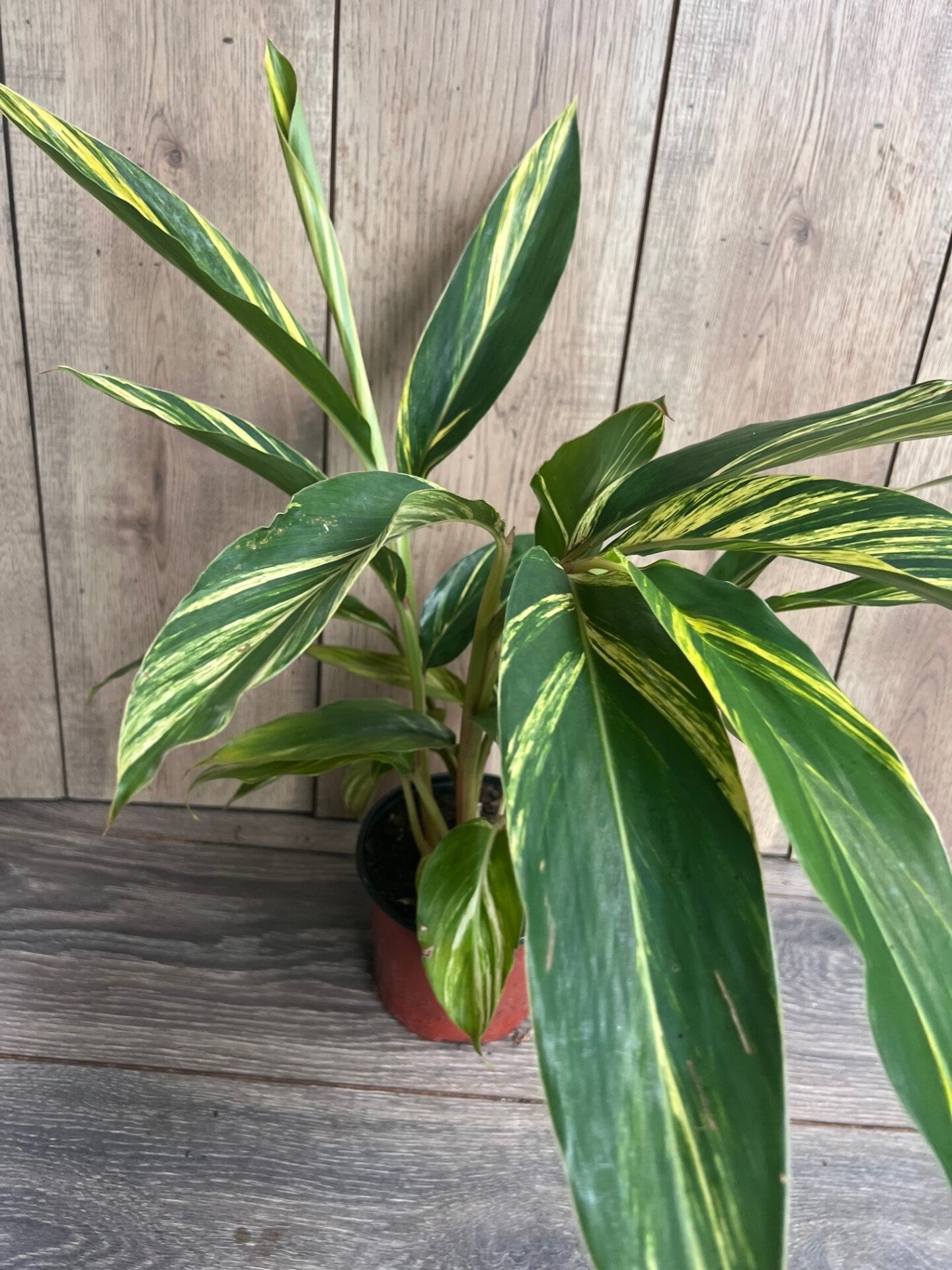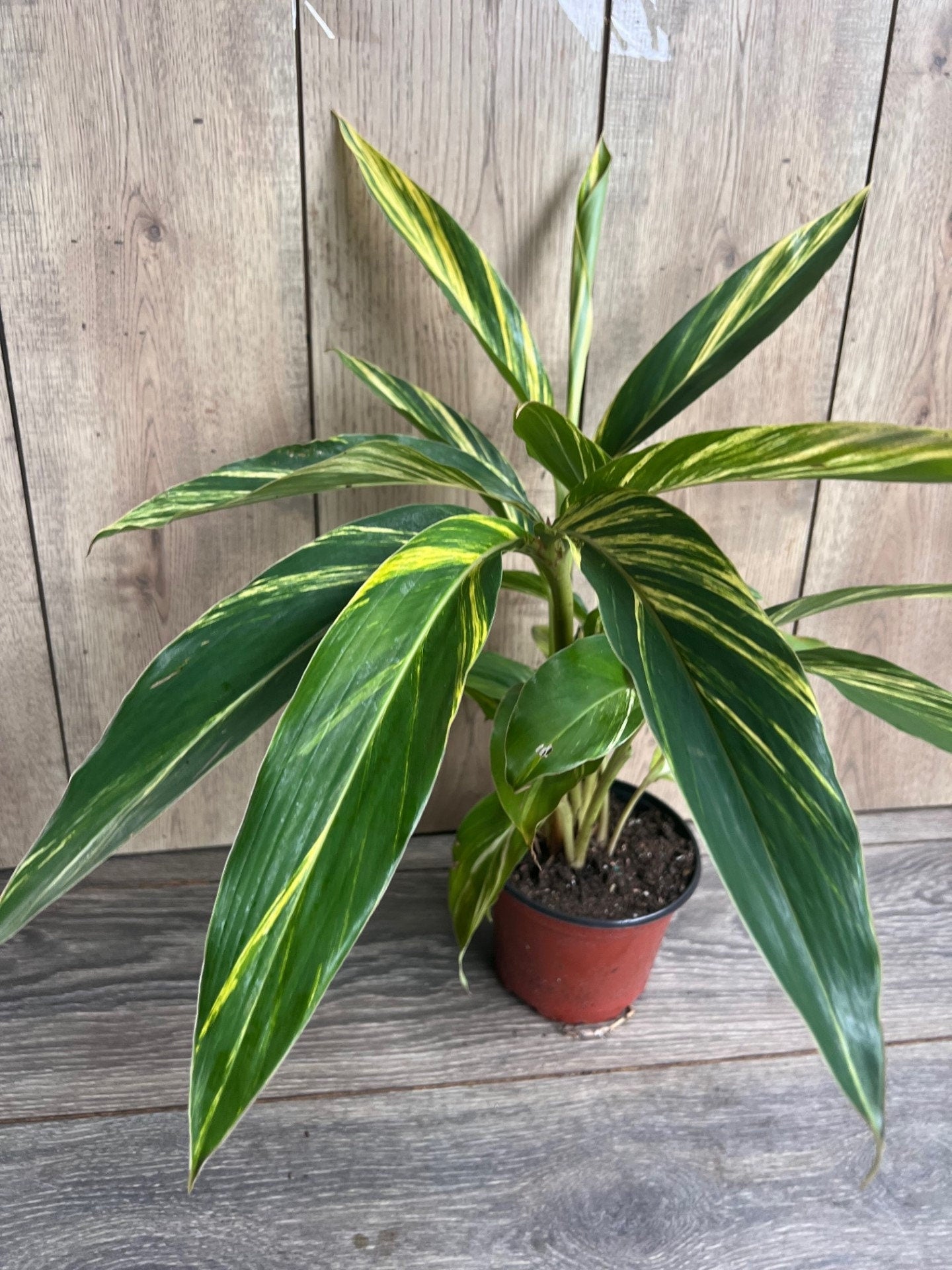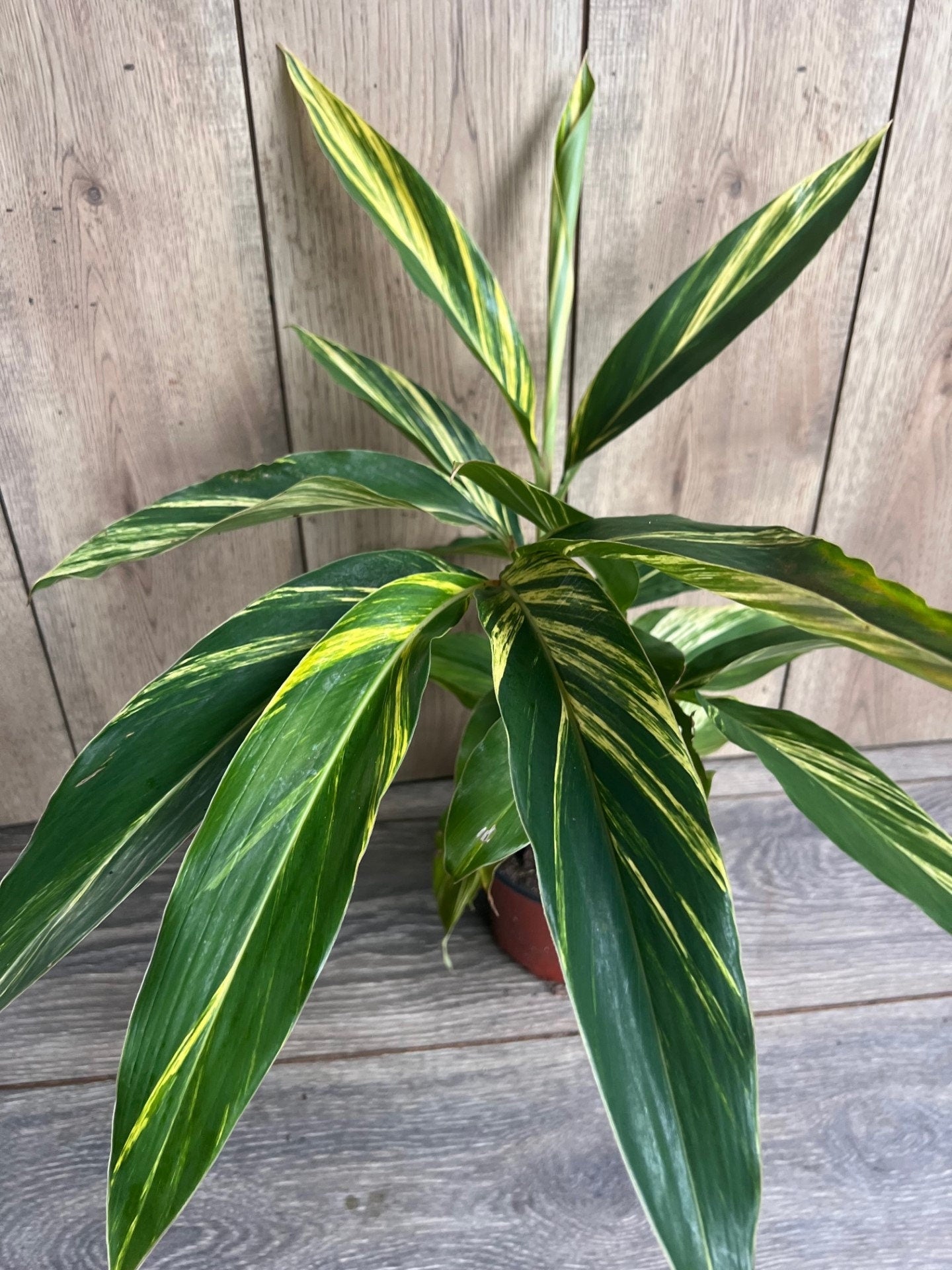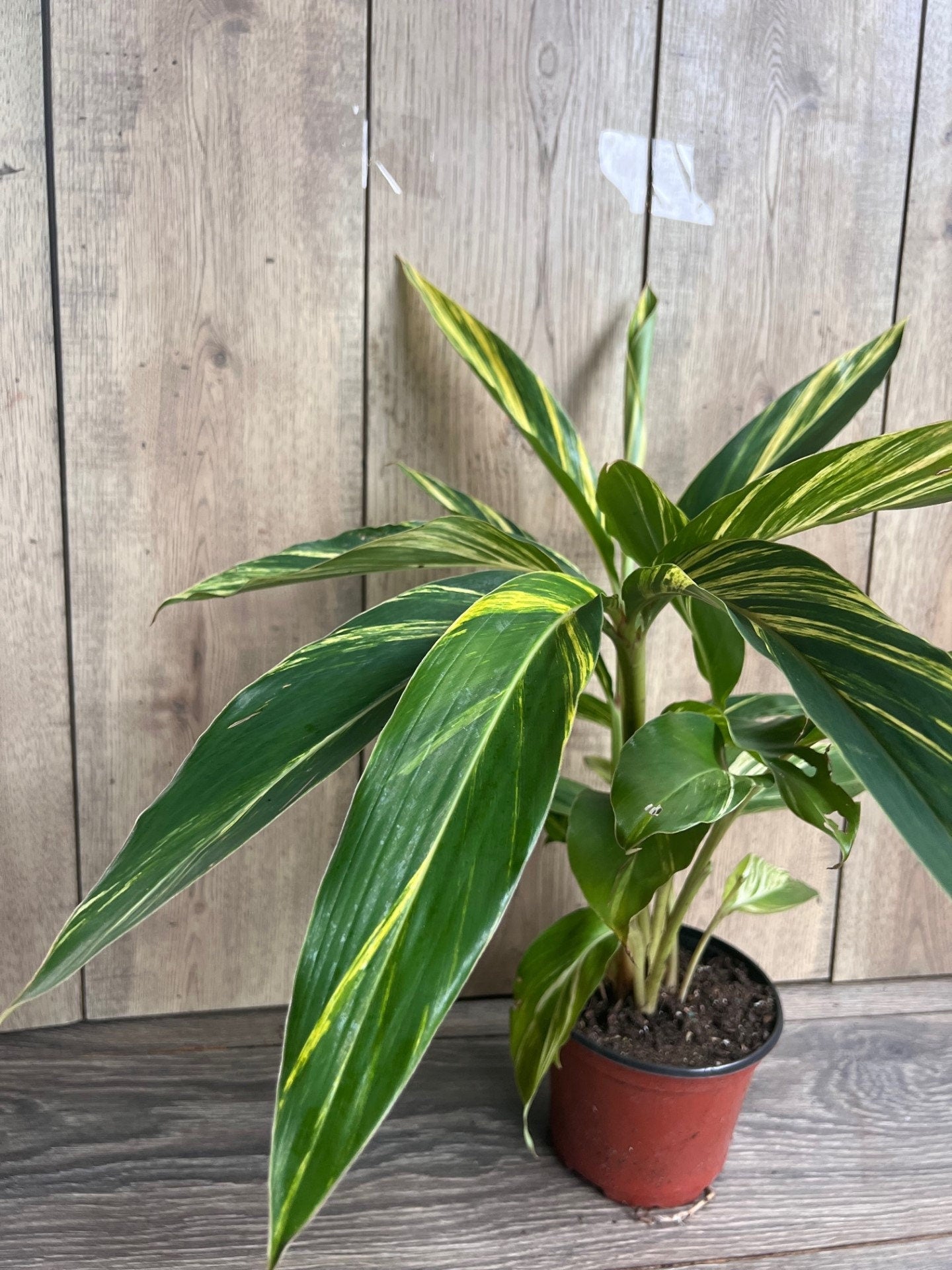1
/
of
6
Variegated Shell Ginger (Alpinia Zerumbet ‘Variegata’) in 6" pot
Variegated Shell Ginger (Alpinia Zerumbet ‘Variegata’) in 6" pot
Regular price
$20.42 USD
Regular price
$27.23 USD
Sale price
$20.42 USD
Unit price
/
per
Shipping calculated at checkout.
Couldn't load pickup availability
Note: You will receive Variegated ginger plant in 6" pot similar to the pictures
Variegated ginger - sometimes called “shell ginger” - dominates the tropical shade garden with striped green and yellow leaves and a wide-spreading habit.
Butterfly ginger is a green-leaved plant that only grows about 3 feet tall, prefers part shade, and should be grown near the lanai or porch so you can appreciate the wonderful smell of the blossoms.
Calathea, maranta stromanthe and ctenanthe will do moderately well in moderately low light, but they prefer to be in medium to bright indirect light. Avoid direct sunlight as this will fade the plant’s color and burn the leaves. Plants that have more colorful leaves will benefit from having more filtered bright light.
Water
Water these indoor plants when the top layer of soil is dry. At that point, water thoroughly and make sure there is adequate drainage. Use filtered water whenever possible as prayer plants are sensitive to salts and chemicals found in some water systems or wells. Make sure your plant is not left in standing water!
Soil
Potting soil that is rich in nutrients and organic matter, but still has the ability to drain well is the perfect growing medium for all prayer plants. Most coco coir or peat-based potting soil mixes will be adequate but make sure that they do not contain water-retentive crystals as they can cause the soil to continually stay moist causing root rot. If you are feeling adventurous, try creating your own potting soil!
Temperature
The optimal temperature for this family of houseplants is 65-85℉. Don’t place them near drafty windows or doors in the colder months. Exposure to freezing temperatures, even for a few minutes can damage the leaves. Keep your prayer plants warm all year long and provide them with good air circulation to help avoid spider mites and other indoor plant pests.
Humidity
Calathea, maranta, stromanthe and ctenanthe love humidity, and you’ll quickly notice the edges of the leaves browning if the air is too dry. If the air is too dry, a humidifier is the most effective way to raise the moisture level in your home. If you don’t have a humidifier, group your plants together, or place them atop a tray of pebbles and water. Learn how to increase the humidity in the air around your indoor plants!
Fertilizer
Fertilize them during the growing season (spring through summer). You can use a wide range of fertilizers, like fish or seaweed emulsion, compost-like worm castings, or a complete liquid fertilizer. We recommend diluting all liquid fertilizers to 1/4 the recommended strength. If your plant already has a slow-release fertilizer in the soil, either applied by you or the grower, then it’s not necessary to fertilize for 1-2 months, depending on the size of the plant. Larger plants most likely have used up the nutrients and should be fertilized sooner.
Growth Rate
Most Prayer Plants are grow at a medium rate, and they rarely exceed heights over 3-4' indoors. If given the proper care, they will fill in and become wide and lush with large leaves!
Pet Friend or Foe
All Prayer Plants are non-toxic to pets!
Share
